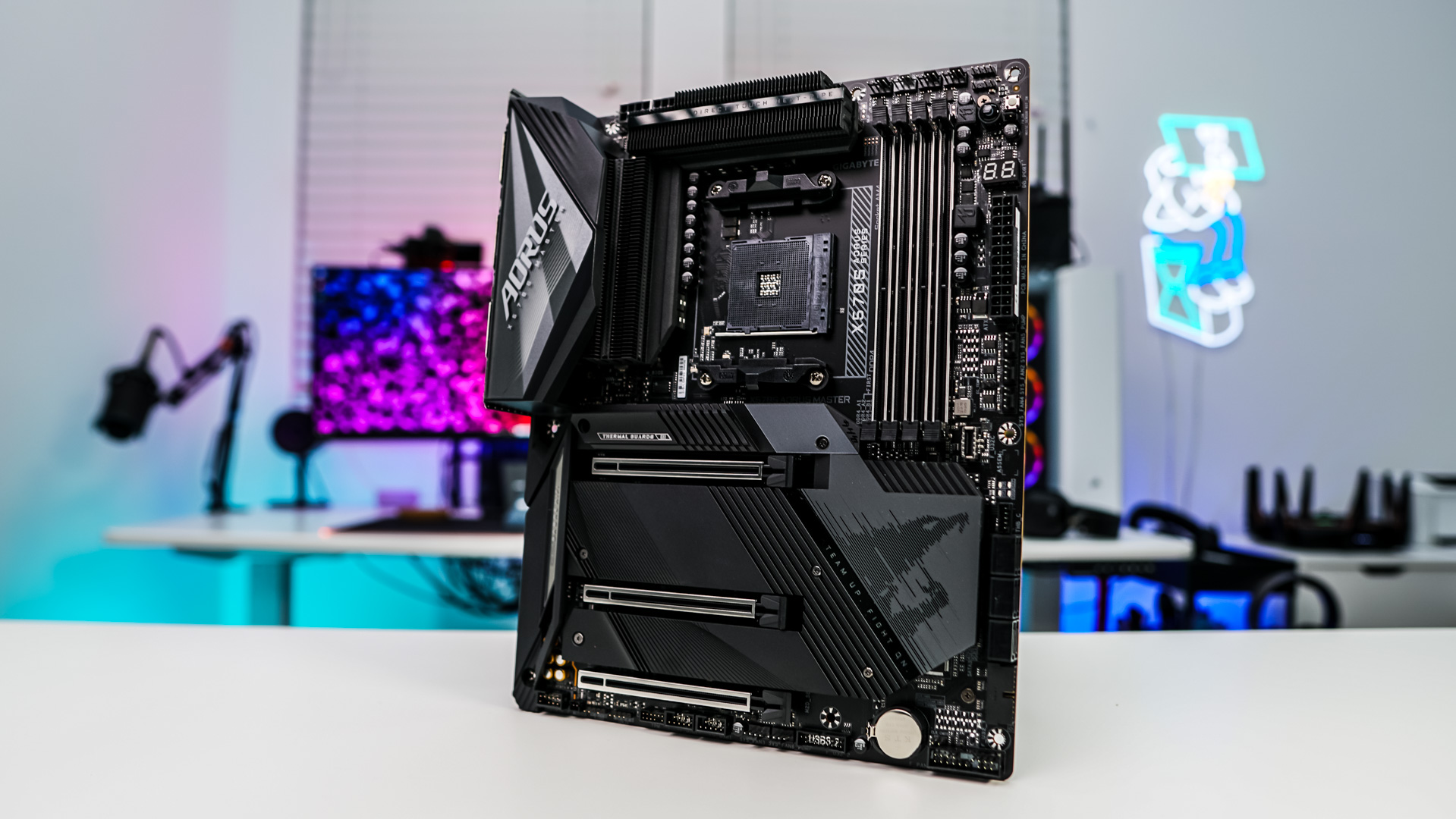Final Thoughts
Obviously the biggest update with the X570S AORUS Master is that the chipset is passively cooled, so so cooling fan. Beyond that though you have quite a lot of updates which really makes this board seem like a very modern board with all of the features you would expect. I really like the new design of the board, especially compared to the original. It flows a lot better and all of the heatsinks on the bottom of the board really make this board feel solid.
Talking about those heatsinks they cover four PCI-Express 4.0 M.2 slots, on most boards we only see three. This is great, especially since the price of M.2 NVMe drives keeps on going down. This board has plenty of connectivity too, there are 12 USB ports on the rear I/O as well as multiple internal headers. It was nice to see USB 3.2 gen 2×2 on this board, although its performance was a bit sub-par. On other USB 3.2 gen 2×2 connections we would average around 2000 MB/s with our ADATA SE900G drive, but using the Type-C port on this board we only saw around 1600 MB/s, which was a bit disappointing. On the networking front you have WiFi 6E as well as 2.5G LAN, although many people would have liked to have seen more than one Ethernet connection.
When it came to overclocking we were able to push our Ryzen 9 5900X all the way up to 4.6 GHz on all 12 cores and we did not run into any issues with power delivery or VRM overheating. Another thing that is really nice about this board is that it supports memory up to 5400 MHz.
I think that if you are already on the X570 platform there would be no reason to upgrade to this board, but if you are on an older platform these new X570S motherboards would be my top choice if building a new system. Right now you can pick this board up at our favorite online retailer for $377.99. Overall ThinkComputers gives the Gigabyte X570S AORUS Master Motherboard a 9 out of 10 score.

Pros:
– Passively cooled chipset
– New look
– Four M.2 slots
– So many USB ports
– Can handle overclocking 5000 series chips
Cons:
– Single Ethernet port
– USB 3.2 gen 2×2 port had sub-par performance


